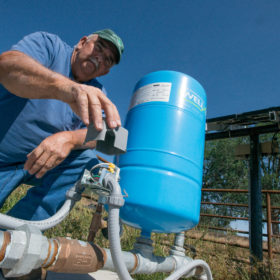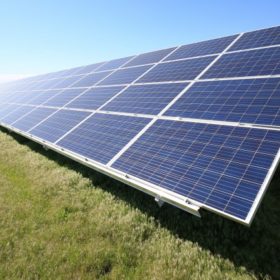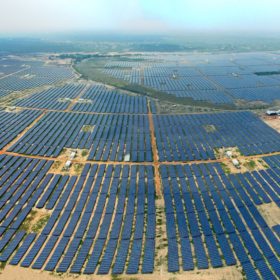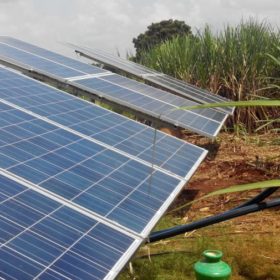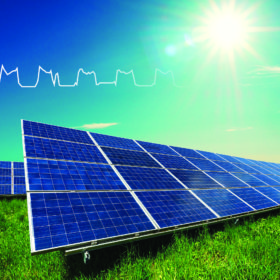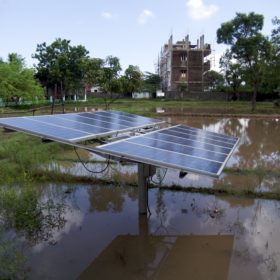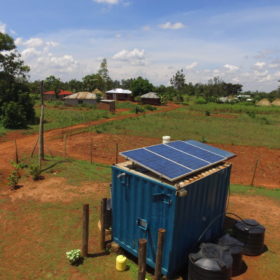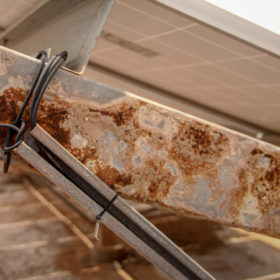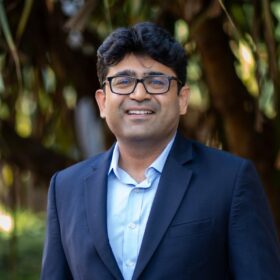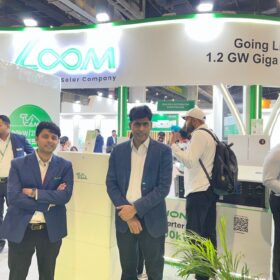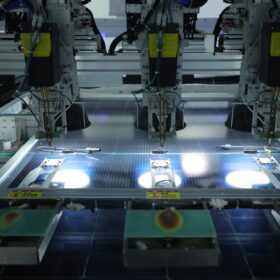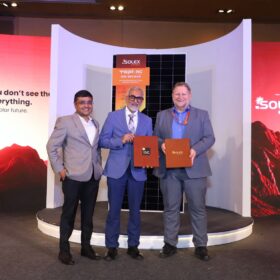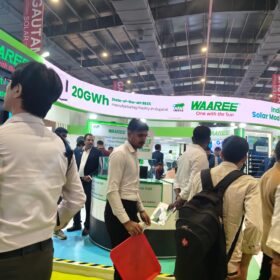A multi-level inverter for solar water pumps
Scientists in India have tested a new inverter topology with a single-phase, induction-motor water pump. The seven-level inverter, with five power semiconductor switches, is said to be particularly efficient at reducing switching losses thanks to a pulse width modulation technique.
Raising crops in PV facades
An international research group has analyzed the visual impact of PV facades on buildings which include crop cultivation. Architects, PV specialists and farmers were surveyed and the results showed broad acceptance of such projects.
Haryana tenders 25 MW farmland solar under PM KUSUM
Applications are invited for setting up cumulative grid-connected capacity of 10 MW for Uttar Haryana Bijli Vitran Nigam and 15 MW for Dakshin Haryana Bijli Vitran Nigam. The solar power generated will be purchased by Discoms at a pre-fixed levelized tariff of Rs 3.11/KWh.
Adani rolls out roadmap to become largest renewable power player by 2030
India’s largest private-sector thermal power producer—which ranked as the sixth largest solar player globally in 2019—will invest over 70% of its budgeted Capex for the energy vertical into clean energy and energy-efficient systems to fuel its transformation.
Tripura tenders solarization of 1300 agriculture pumps under KUSUM
Bidding closes on February 10 for the solar systems that are to be set up on turnkey basis. Completion period is eight months from the award of contract.
Technique Solaire commissions its second photovoltaic power plant in India
The first Indian power plant, with a capacity of 5.5 MWp, was inaugurated in 2017 in the state of Uttarakhand. With the just commissioned photovoltaic power plant of 27 MWp, the developer claims to offer the lowest price of solar electricity in the Indian state of Maharashtra.
Vikram Solar supplies modules for 300 solar pumps across West Bengal and Odisha
The government’s KUSUM scheme helps farmers install standalone solar pumps with a capacity of up to 7.5 hp. There is also support to make grid connected pumps of the same size solar powered. A PV capacity of up to twice the pump capacity in kW is allowed under the scheme.
Uttar Pradesh govt aims to support 75 MW farmland solar plants in 2019-20
Under KUSUM scheme, the state government will help farmers in setting up an aggregate 75 MW capacity of grid-connected solar plants—in capacities of up to 2 MW—on their barren or cultivable land.
COP25: India calls for speedier expansion of International Solar Alliance
Launched in November 2015, the alliance aims to collectively address key challenges to the scaling up of solar energy in member countries that fall between Tropic of Cancer and Tropic of Capricorn. Out of 121 prospective member countries, over 83 have already joined it in a period of just four years.
Assessing metal leaching from PV modules dumped in landfill
An Indian Institute of Technology research team analyzed around 300 studies about PV panel waste containing carcinogenic metals. The researchers said solar module recycling is not economically profitable and policy support is necessary to avoid panels being dumped in landfill.
